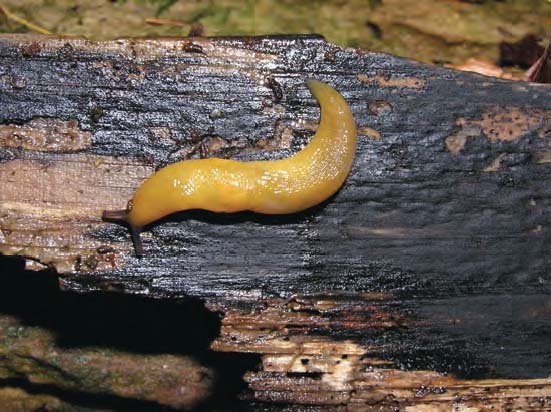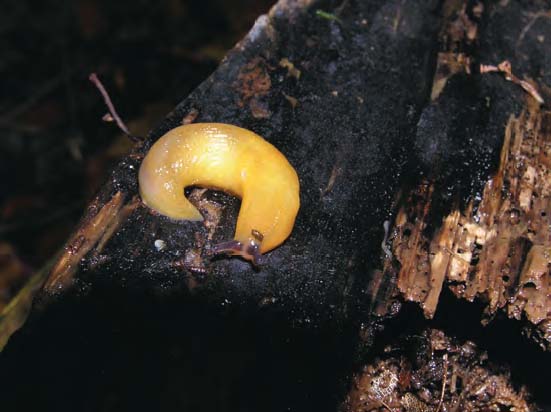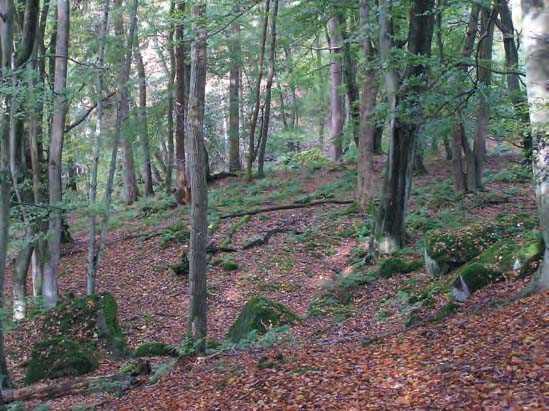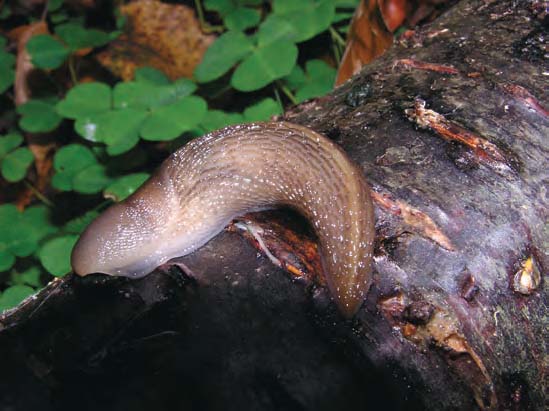Issue
18
Page
20
Species
|
Malacolimax tenellus is a scarce species in Yorkshire with a few scattered sites in VC 65 north of Ripon and a similarly small number of sites from the North York Moors area of VC 62. There is however a single known site in VC 64 that being at Strikes Wood to the south of Pateley Bridge in upper Nidderdale. The site is often referred to as Ravens Ghyll and is situated at the bottom of a short steep sided valley on the millstone grit at about 175 metres above see level. It is currently managed as a private nature reserve and has a public footpath running through it which is part of the Nidderdale Way.
John Armitage of Leeds first discovered the site on 2nd October 1971 and as a boy I can recall him bringing specimens to a meeting of the Leeds Naturalists and Scientific Society as an exhibit.
The site has been visited on several occasions since this date and records are held by the Yorkshire Conchological Society for visits in 1986 and 2002. On both those occasions the species was found.
On 20th October this year Adrian Norris and myself decided to make a short visit to look at the site and see if there were any noticeable problems. We parked the car just off the road at the top of the hill and were glad that thick coats had been worn as the day was extremely windy and cold. We entered the upper part of the wood, which at this point is dominated by silver birch with a scattering of sycamore. M.tenellus has never been found in this area and we noted that there was a distinct lack of fungi around. Towards the bottom section of the wood the tree cover changes to dominance by beech with a scattering of sycamore and silver birch and it is in this area where the species is to be found. We noted that in this area there was an increased fungi presence mainly of Russula sp., but none were identified to specific status. Many had evidence of slug predation, which in some cases was very heavy.
It was only a couple of minutes after commencing a search in this area that a specimen was found crawling on leaf litter. Following this we searched leaf litter around the area of predated fungi and easily found the species in numbers all were 3 to 5cm in length and appeared healthy. I feel it is interesting to note that although we turned over a large number of logs and stones in the area no specimens were found under them, a trend I have noted on previous visits. Some of the specimens were extremely obliging even for my poor photographic abilities and figures 1 and 2 show an example. Figure 3 shows a general view of the site. As can be seen the ground cover is virtually non-existent with just a small amount of bracken. Due to the steep sided aspect this area is extremely sheltered and seemed much warmer than the upper reaches.
On this occasion we concentrated on looking for M.tenellus but it is worthwhile pointing out that Sykes wood itself is extremely rich with 39 species being recorded from the 1km square. These include Zenobiella subrufescens, Leiostyla anglica, Limax cinereoniger, Spermodea lamellata and Vertigo substriata. One of the reasons for this profusion of species at this site is a fairly large tufaceous spring near the stream banking.
As stated previously we were concentrating on M. tenellus but we were rewarded with a very fine specimen of the brown form of L.cinereoniger. Unfortunately it was a rather shy specimen so fig 4 only shows its body and shoulders. The consensus of opinion is that the site is in a very healthy state with no conservation issues at present.
|
Photographs
 Fig 1: Malacolimax tenellus (David Lindley)
 Fig 2: Malacolimax tenellus (David Lindley)
 Fig 3: Strikes Wood (David Lindley)
 Fig 4: Limax cinereoniger juvenile (David Lindley)
|
